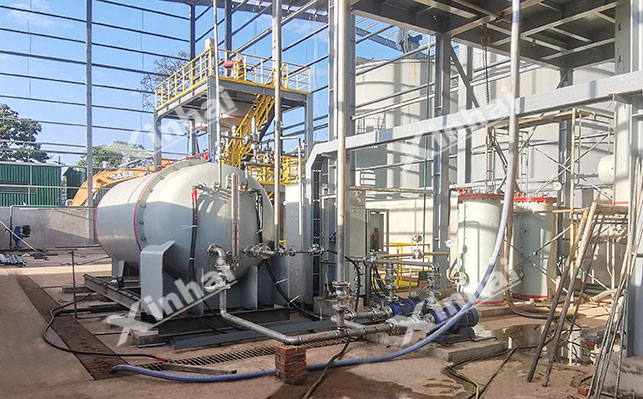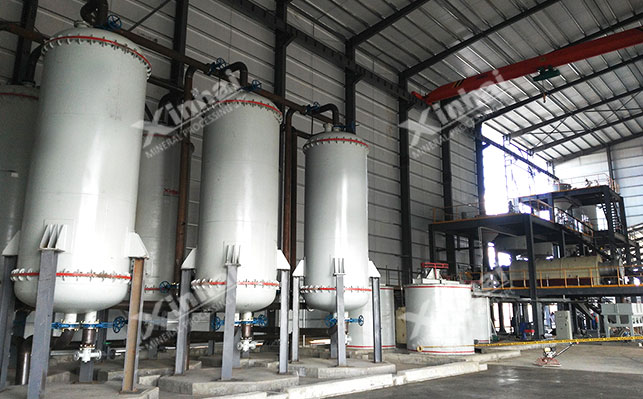Gold leaching, as an important gold beneficiation process, uses specific chemical reagents to dissolve gold from ores, forming a gold containing solution, and further extracting gold. It has the characteristics of high efficiency and good selectivity, and can extract gold from low-grade ores, improving resource utilization.
The efficiency of gold leaching is influenced by various factors, mainly divided into four categories: ore properties, leaching reagents, leaching conditions, and stirring intensity.

1.Ore type
Different types of ores have varying effects on gold leaching. Gold in oxidized ores is relatively easy to leach, while gold in sulfide ores needs to be pre treated before leaching. The difficulty of leaching gold in mixed ores falls between the two.
2.Ore particle size
On the one hand, the smaller the particle size of the ore, the larger the contact area between gold and leaching reagents, and the faster the leaching rate; On the other hand, the smaller the particle size, the higher the viscosity of the slurry, which affects the diffusion and mass transfer of leaching reagents and reduces the leaching rate.
3.Ore grade
The ore grade affects the amount of leaching reagents and leaching time. The higher the grade, the less leaching reagents are required and the shorter the leaching time; On the contrary, an increase in dosage will prolong the time.
4.Mineral composition
The mineral composition in ore has a significant impact on gold leaching. Pyrite, arsenopyrite, etc. will react with leaching reagents, consume reagents, and reduce the gold leaching rate; Quartz, feldspar, etc. can adsorb leaching reagents, affecting diffusion and mass transfer, and reducing leaching rate.
1.Types of leaching reagents
Different types of leaching reagents have different effects. Cyanide is currently the most widely used gold leaching reagent, with fast leaching speed, good selectivity, and low cost, but it is toxic and harmful to the environment and human health. Thiourea and chloride are also commonly used reagents, with good leaching speed and selectivity, but high cost.
2.Concentration of leaching reagents
The concentration affects the leaching rate and gold leaching rate. The higher the concentration, the faster the speed, and the higher the leaching rate, but too high will increase costs and environmental pollution. The concentration of cyanide is generally controlled between 0.05% and 0.1%.
3.pH value of leaching reagent
Different leaching reagents have different leaching effects at different pH values. The reasonable pH value for cyanide leaching is around 10, for thiourea leaching it is around 1.5, and for chloride leaching it is around 2. In actual production, the appropriate pH value should be selected based on the type of reagent and the properties of the ore.

1.Leaching temperature
Temperature affects the leaching rate and gold leaching rate. The higher the temperature, the faster the speed, and the higher the leaching rate. However, excessive temperature can lead to reagent decomposition and volatilization, increasing costs and environmental pollution. The appropriate temperature should be selected based on the properties of the ore and the process requirements.
2.Leaching time
Time affects the gold leaching rate. The longer the time, the higher the leaching rate, but being too long will increase costs and reduce production efficiency. The appropriate time should be selected based on the properties of the ore and the process requirements.
3.Liquid solid ratio
The liquid-solid ratio refers to the ratio of the volume of leachate to the mass of ore. The higher the liquid-solid ratio, the faster the leaching rate and gold leaching rate, but if it is too high, it will increase the amount of reagents used, the cost, and the difficulty of subsequent processing. The appropriate liquid-solid ratio should be selected based on the properties of the ore and process requirements.
The stirring intensity affects the leaching speed and gold leaching rate. The greater the intensity, the faster the speed, and the higher the leaching rate. Stirring can ensure full contact between the leaching reagent and the ore, improving diffusion and mass transfer rates. However, excessive intensity can lead to an increase in slurry temperature, accelerated decomposition and volatilization of reagents, increased equipment wear and energy consumption. The appropriate mixing intensity should be selected based on the properties of the ore and the process requirements.
In actual production, it is necessary to select suitable leaching reagents and conditions based on the properties of the ore and the requirements of the leaching process, control the stirring intensity, in order to improve the efficiency and rate of gold leaching, reduce costs, and minimize environmental pollution. Suggest conducting mineral processing experiments to determine the leaching conditions through experimental analysis.